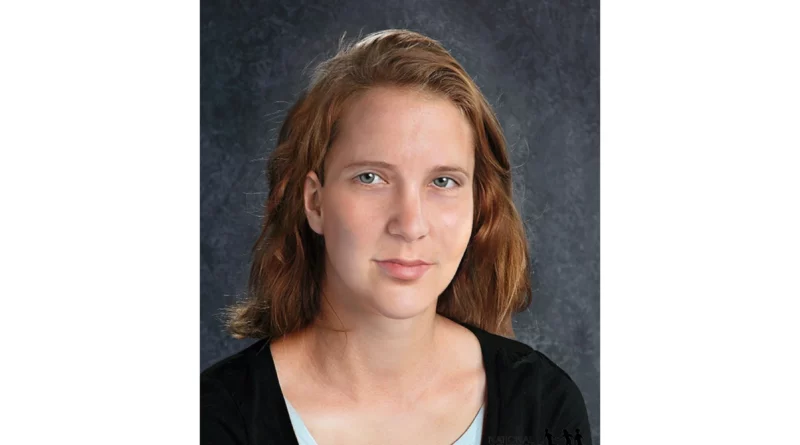Heather Jennifer Lewis Was Suspended From School Then Disappeared Forever in Ely Nevada
On April 4, 2003, a mystery unfolded in the quiet town of Ely, Nevada, that would leave a community searching for answers for more than two decades. This is the detailed account of the disappearance of Heather Jennifer Lewis—a 13-year-old girl whose sudden vanishing has become one of the most perplexing cases in the region’s history. Her story is one of youthful vulnerability, family strife, and an unresolved enigma that continues to haunt those who remember her and the circumstances that led to her disappearance.
Early Life and Background
Heather Jennifer Lewis was born into a complex family dynamic that would later become a significant part of her story. Raised in Ely, Nevada, Heather experienced the challenges that often accompany a troubled home life. Living with her father and stepmother, she struggled with feelings of abandonment and loss, as her mother, older brother, and grandparents resided in Oklahoma. These family separations contributed to an emotional instability that was compounded by her experiences at school and within her community.
From an early age, Heather exhibited signs of distress. She was known to be quiet and introspective, yet she also had a spark of independence that hinted at her inner resilience. However, the challenges of adolescence were magnified by the absence of a supportive network at home. Her daily life was marred by the feeling of being torn between two worlds—a life marked by family conflict and the desire to find a sense of belonging elsewhere.
The Day of Disappearance
April 4, 2003, began as any other day in Ely, with the desert sunrise casting long shadows over the small town. For Heather, it was a day that would abruptly change the course of her life. On that morning, she attended school at White Pine Middle School—a place that had become a familiar, though sometimes unforgiving, environment. Earlier in the week, she had been suspended from school due to her possession of cigarettes, a decision that reflected the school’s strict policies but also hinted at a deeper undercurrent of behavioral issues stemming from her troubled home life.
On that fateful day, after the suspension and the subsequent emotional turmoil, Heather left school. Eyewitness accounts suggest that her departure was not planned in a conventional manner. Instead, it appears that she slipped away, leaving behind not only her classmates and teachers but also a community that had known her only in fleeting moments of both vulnerability and resilience.
The Last Known Movements
In the hours following her departure from school, the trail of Heather’s whereabouts grew increasingly obscure. One witness reported seeing her at a convenience store in McGill—a small town approximately 12 miles from Ely. This sighting is one of the few pieces of evidence that surfaced in the immediate aftermath of her disappearance. According to this account, Heather was seen engaging in conversation with a group of girls. These girls, whose identities have never been confirmed, were reportedly discussing a trip to Las Vegas—a journey that would have taken them well beyond the borders of their small-town existence.
The decision to mention a potential trip to Las Vegas, whether as a realistic plan or a momentary fantasy, adds another layer of mystery to the case. Was this conversation a glimpse into a desire for escape, a manifestation of her inner turmoil, or something more ominous? The ambiguity of the circumstances surrounding these last known movements continues to fuel speculation among those who have followed the case over the years.
Initial Response and Investigation
In the days immediately following Heather’s disappearance, local law enforcement launched an investigation that, while earnest, was hampered by a lack of concrete leads. The investigative team quickly realized that they were dealing with a case that straddled the boundaries between a run-away scenario and a potential abduction. The sparse information available made it difficult to develop a coherent timeline of her final hours, and the community’s shock was palpable.
Detectives began canvassing the neighborhoods and interviewing acquaintances, family members, and anyone who might have insight into Heather’s recent behavior. However, the limited resources available in a small town like Ely, combined with the sporadic nature of the evidence, meant that progress was slow. As days turned into weeks, the hope of a swift resolution began to wane, leaving both investigators and the community grappling with uncertainty.
Theories and Speculations
Over the years, several theories have emerged regarding what might have happened to Heather Jennifer Lewis. The most prominent of these theories can be broadly categorized into a few key possibilities:
Runaway Theory
One of the initial theories proposed was that Heather had chosen to run away. Her suspension from school and the family tensions at home may have driven her to seek a new life away from the constraints of her immediate environment. Proponents of this theory argue that Heather might have been seeking freedom or attempting to escape from a situation that felt unbearable. The conversation about a potential trip to Las Vegas, overheard at the convenience store in McGill, is often cited as evidence of her desire to break free from her current circumstances. However, critics of this theory point out that the inherent risks of a runaway journey for a 13-year-old are immense, particularly given the harsh environmental conditions of the Nevada desert.
Abduction or Foul Play
Another prevailing theory is that Heather was the victim of abduction or foul play. Some community members and investigators believe that someone may have taken advantage of her vulnerable state. The fact that her disappearance was not followed by any definitive evidence of her being a voluntary runaway raises concerns about the possibility of criminal involvement. Speculation about this theory has been fueled by the lack of any clear sightings or reliable leads after her last known appearance. Moreover, the isolated nature of Ely and the vast, unforgiving landscape of the Nevada desert have led some to suggest that if she were harmed, her remains might never be found, adding an element of grim finality to this possibility.
Accidental or Natural Causes
A less frequently discussed, yet still plausible, theory revolves around the idea that Heather may have succumbed to natural causes or an accidental fall while trying to navigate the rugged terrain of the Nevada desert. Given the extreme weather conditions in Ely—especially the possibility of freezing temperatures at night—the theory posits that she might have encountered a situation where exposure or an accidental injury led to her untimely death. This theory is supported by the fact that, despite extensive searches, no definitive evidence of foul play or organized abduction has ever surfaced. However, the absence of a body or any conclusive forensic evidence keeps this theory firmly in the realm of speculation.
The Role of Peer Influence
Another aspect that has been explored in relation to Heather’s disappearance is the influence of peer groups and the possibility of being led astray by companions. The report of her being seen with a group of girls discussing a trip to Las Vegas raises the question of whether she was influenced by peers who were themselves involved in risky behavior. Some argue that such a social circle could have led her into dangerous situations, potentially involving exploitation or further entanglement in activities beyond her control.
Investigative Challenges
The investigation into Heather Jennifer Lewis’s disappearance has been fraught with numerous challenges. One of the most significant obstacles has been the limited physical evidence available. In a case where the primary leads consist of witness accounts and circumstantial details, the absence of clear forensic evidence makes it difficult to reconstruct the events of that day.
Limited Resources and Remote Location
Ely, Nevada, is a small, remote town, and the local law enforcement agencies often lack the resources and technological tools available in larger cities. This limitation has impacted the speed and depth of the investigation. With a small-town police department stretched thin, the case of Heather Jennifer Lewis was one among many that required attention, often leaving the most complex leads underexplored.
Evolving Forensic Techniques
Over the years, forensic science has made significant advancements, yet many of these new techniques were not available at the time of Heather’s disappearance. Although there have been efforts to revisit the case with modern technology, the passage of time has likely degraded any potential physical evidence that might have been collected in 2003. This degradation has made it increasingly difficult to apply contemporary forensic methods that could potentially provide new insights.
Community Cooperation and Witness Reluctance
Another challenge has been the reluctance or inability of some community members to come forward with information. In small towns, social dynamics and fear of retribution can sometimes lead to witnesses withholding details that might appear insignificant or incriminating. Over the years, several individuals have come forward with theories and recollections, but many more accounts remain unverified, adding layers of complexity to the investigation.
The Impact on Family and Loved Ones
The disappearance of Heather Jennifer Lewis has had a lasting impact on her family and friends. For her parents, stepmother, and extended relatives, the lack of closure has been a source of continual pain and frustration. The unresolved nature of the case has led to years of heartache, with each new theory or piece of evidence reopening old wounds.
Family members have been involved in advocacy efforts, frequently engaging with local authorities and national organizations dedicated to missing persons. They have also participated in community outreach, hoping that increased awareness might eventually lead to a breakthrough. Despite the passage of time, the emotional scars remain, and the search for Heather is as much about finding answers as it is about healing from the trauma of her unexplained absence.
Community and Social Media Involvement
In the wake of Heather’s disappearance, the community of Ely, along with online forums and social media groups dedicated to unsolved mysteries, has played a crucial role in keeping the case alive. From local news articles to dedicated pages on sites like The Charley Project, Missing People In America, and various social media platforms, the story of Heather Jennifer Lewis has been disseminated far beyond the borders of her small hometown.
Grassroots Efforts
Local community members have organized vigils, information sessions, and public appeals in an effort to gather new leads. These grassroots efforts have not only provided emotional support for those affected but have also helped to maintain a collective memory of Heather’s case. The involvement of concerned citizens has kept the investigation in the public eye, even when official leads have grown cold.
Online Investigative Communities
The rise of online investigative communities has brought a new dimension to the search for Heather. Amateur detectives, true crime enthusiasts, and concerned netizens have pooled their resources and shared their theories on various online platforms. These digital communities analyze every available piece of evidence, revisit archived news reports, and often collaborate with local journalists in the hope of uncovering overlooked details.
Media Coverage and Public Interest
Local media outlets, including newspapers, radio stations, and online news portals, have revisited Heather’s case multiple times over the years. Each renewed wave of media coverage has brought with it a surge of public interest and, occasionally, new tips. While many of these leads have not resulted in significant breakthroughs, they serve as a testament to the enduring impact of Heather’s disappearance on the collective consciousness of Ely and the broader community.
Law Enforcement and Investigative Agencies
The investigation into Heather Jennifer Lewis’s disappearance has seen the involvement of multiple law enforcement agencies over the years. Local authorities in Ely initially led the investigation, but as the case attracted national attention, specialized units and organizations dedicated to missing persons cases became involved.
Local Police Efforts
In the early days of the investigation, the Ely police department conducted a thorough search of the area surrounding White Pine Middle School and other key locations. They interviewed teachers, classmates, and local residents, gathering as much information as possible about Heather’s habits, friends, and recent behavior. Despite these efforts, the limited scope of the initial investigation and the sparse physical evidence meant that many leads quickly reached dead ends.
State and Federal Involvement
As the case continued to attract attention, state-level and federal agencies were brought in to assist with the investigation. These agencies brought with them more advanced forensic techniques and broader investigative resources. However, the passage of time and the degradation of any physical evidence collected in 2003 have made it challenging to apply modern methods effectively. Despite these obstacles, law enforcement has not officially closed the case, and Heather’s disappearance remains an open investigation.
Collaborative Efforts and Cold Case Units
In recent years, cold case units have revisited Heather’s case in an effort to re-examine the available evidence with fresh eyes. These units, often composed of veteran detectives and forensic experts, are dedicated to solving long-standing cases that have defied resolution. Collaborative efforts between local authorities, state agencies, and independent investigators have generated new theories, though none have yet resulted in a breakthrough that conclusively explains what happened to Heather.
The Role of Technology and Forensic Advancements
Since Heather Jennifer Lewis’s disappearance in 2003, technological advancements have significantly changed the landscape of criminal investigations. Despite these advancements, the case has faced unique challenges that have impeded progress.
Digital Footprints and Modern Investigative Tools
In today’s digital age, investigators have access to a wide range of tools that can track digital footprints, analyze data from cell phones, and utilize advanced forensic methodologies. Unfortunately, the technology available in 2003 was not as developed, and as a result, many of the digital trails that might have provided crucial insights were never established. Modern investigators have attempted to re-examine the available records and communications from the time, but the absence of digital data from Heather’s final days limits the potential for breakthroughs.
Revisiting Cold Cases with New Technology
Cold case units have made significant strides in re-examining unsolved cases, and Heather’s disappearance has been no exception. By applying modern forensic techniques to any remaining physical evidence, investigators hope to uncover new leads. However, the passage of time has meant that any trace evidence that may have existed has likely deteriorated, making it challenging to extract useful information. Despite these setbacks, the case remains open, and the hope persists that ongoing technological advancements will eventually yield the answers that have long eluded both law enforcement and the community.
The Broader Impact on Missing Persons Awareness
The disappearance of Heather Jennifer Lewis is not just a solitary case; it is emblematic of a broader crisis in missing persons cases across the United States. Her story has contributed to national discussions on how society and law enforcement handle such cases, particularly those involving vulnerable youths.
Raising Public Consciousness
Heather’s case has been a rallying cry for advocates and organizations dedicated to missing persons. Her disappearance has spurred discussions about the effectiveness of existing policies regarding runaways and the support systems available to at-risk youth. Public awareness campaigns, social media initiatives, and community outreach programs have all cited Heather’s case as a poignant example of the need for improved resources and preventive measures.
Policy and Community Reforms
In response to cases like Heather’s, some communities have undertaken reforms aimed at better protecting young people. These reforms include changes to school policies, improved mental health services, and more robust community support networks. While these measures may not reverse the tragic outcome of Heather’s disappearance, they represent a proactive approach to preventing similar cases in the future.
The Role of Nonprofit Organizations
Numerous nonprofit organizations have dedicated themselves to the search for missing persons, and Heather’s case has been featured in many of their awareness campaigns. Organizations like the National Center for Missing & Exploited Children (NCMEC), The Charley Project, and various local groups have worked tirelessly to keep her memory alive. Their efforts not only aim to generate new leads but also to provide support for families who find themselves caught in the endless wait for answers.
Ongoing Efforts and the Future of the Investigation
Despite the challenges and the passage of time, the investigation into Heather Jennifer Lewis’s disappearance is far from over. Law enforcement, community members, and independent investigators continue to search for new evidence and re-examine old leads.
Renewed Investigative Initiatives
In recent years, there has been a renewed push to revisit unsolved cases using modern investigative techniques. Heather’s case has benefited from this resurgence in interest, as cold case units have re-opened files and sought out new witnesses. Although progress has been slow, each new piece of information brings hope that one day the mystery will be resolved.
Community Collaboration and Information Sharing
One of the most promising aspects of the ongoing investigation is the collaboration between different stakeholders. Local law enforcement agencies, national organizations, and even independent researchers are working together to pool their resources and share information. This collaborative approach has led to a more comprehensive understanding of the case, even if definitive answers remain elusive.
The Impact of Social Media and Crowdsourced Investigations
Social media continues to play a crucial role in keeping Heather’s story in the public eye. Dedicated pages, forums, and online communities ensure that her disappearance remains a topic of discussion and that any new leads are quickly disseminated to a wide audience. This digital network has proven invaluable in crowdsourcing information and connecting individuals who might have been reluctant to come forward in traditional settings.
Reflections on a Life Interrupted
At its core, the story of Heather Jennifer Lewis is a tragedy of a life interrupted. A young girl with hopes, dreams, and the natural curiosity of adolescence suddenly vanished, leaving behind a trail of unanswered questions and a community in mourning. The human aspect of her disappearance—marked by the loss of potential, the pain of her family, and the shock felt by those who knew her—remains the most poignant part of the case.
The Loss Felt by Family and Friends
For those who loved Heather, the years since her disappearance have been marked by an enduring grief and a persistent hope that someday they might learn what truly happened to her. Family gatherings, community events, and even casual conversations in Ely are all tinged with the memory of a young life that ended without resolution. The emotional toll on her family is immeasurable, and the search for truth is as much about healing old wounds as it is about finding new leads.
A Call for Justice and Closure
The quest for justice in Heather’s case is not solely about uncovering the facts—it is also about providing closure to a family that has endured decades of uncertainty. The desire to finally understand the circumstances that led to her disappearance is a powerful motivator for investigators and advocates alike. Every new theory, every piece of evidence, and every public appeal is driven by the hope that justice will eventually prevail.
Conclusion
Nearly 22 years have passed since Heather Jennifer Lewis vanished from Ely, Nevada, yet the mystery of her disappearance endures. The case is a sobering reminder of the vulnerabilities faced by young people, the complexities of family and social dynamics, and the often-overwhelming challenges of investigating missing persons cases in remote areas. Despite advances in technology, renewed investigative efforts, and the tireless work of dedicated individuals, the truth about what happened to Heather remains elusive.
Her story, marked by both the hope of escape and the darkness of unanswered questions, continues to resonate with those who study unsolved mysteries and those who have experienced personal loss. In the quiet streets of Ely, the legacy of Heather Jennifer Lewis is a constant call to action—a reminder that every missing person is more than just a case file, but a life that deserves to be remembered and, ultimately, understood.
The disappearance of Heather remains an open chapter in the annals of unsolved mysteries, one that challenges investigators, grips the community, and underscores the critical need for continued efforts to bring light to the darkest corners of our society. Until new evidence comes to light, the fate of Heather Jennifer Lewis remains a mystery that both haunts and inspires the ongoing search for answers.
Discover more from City Towner
Subscribe to get the latest posts sent to your email.




